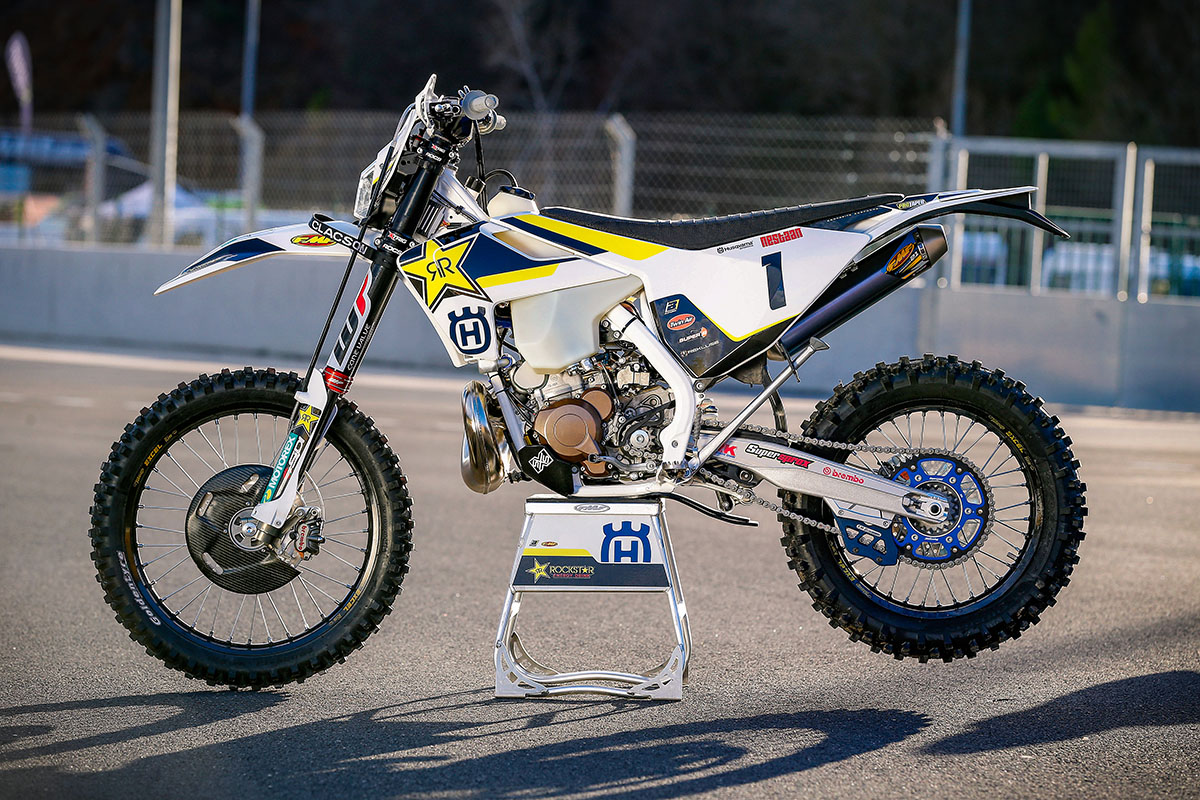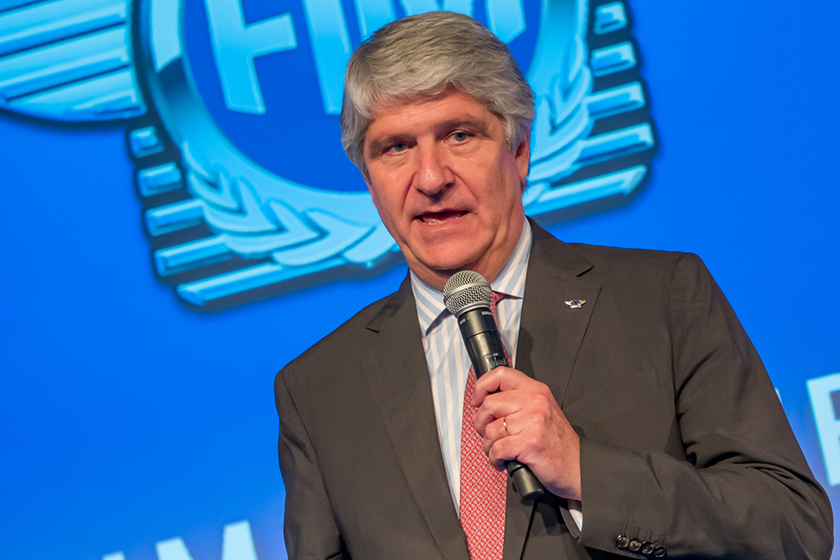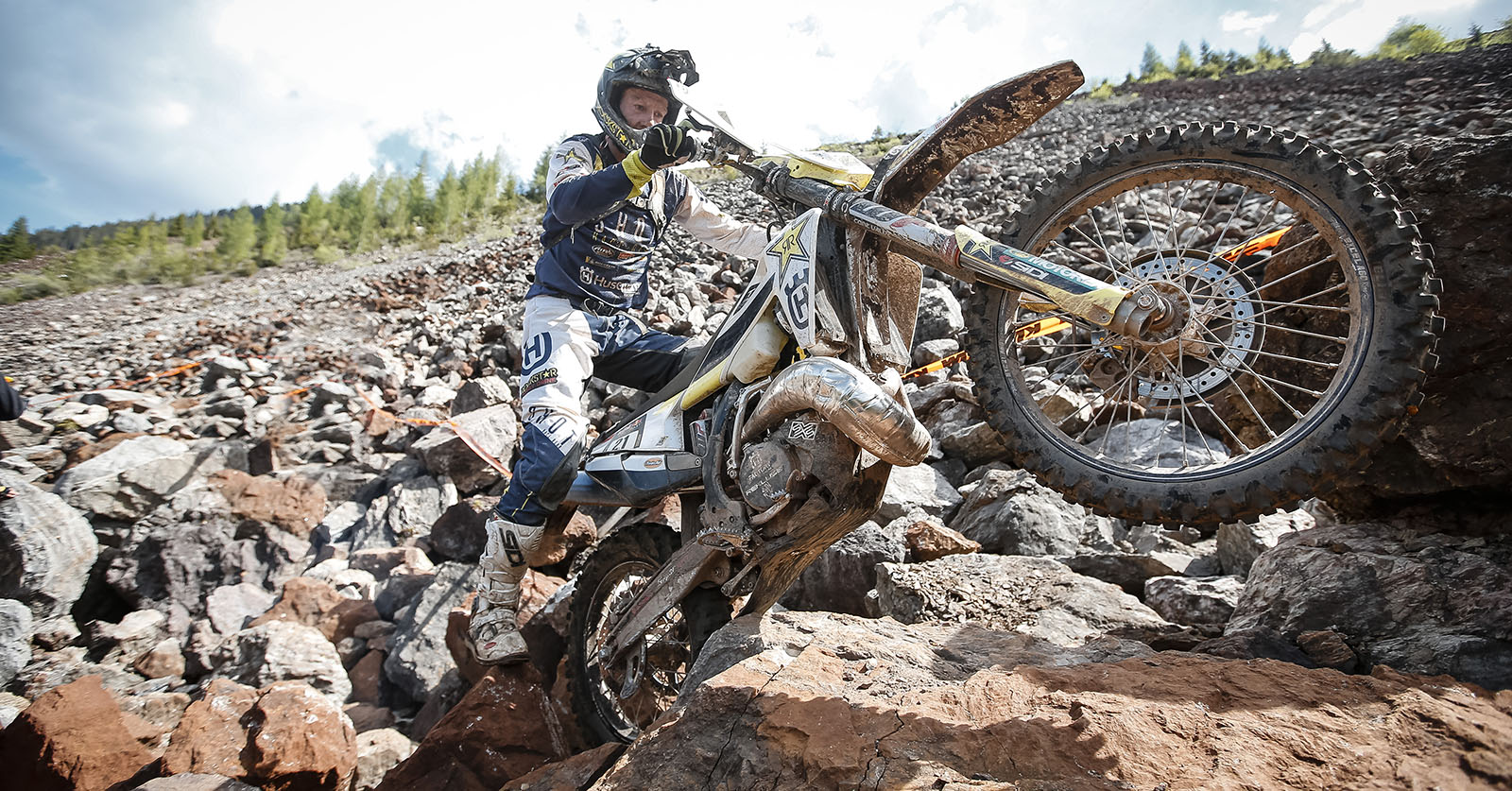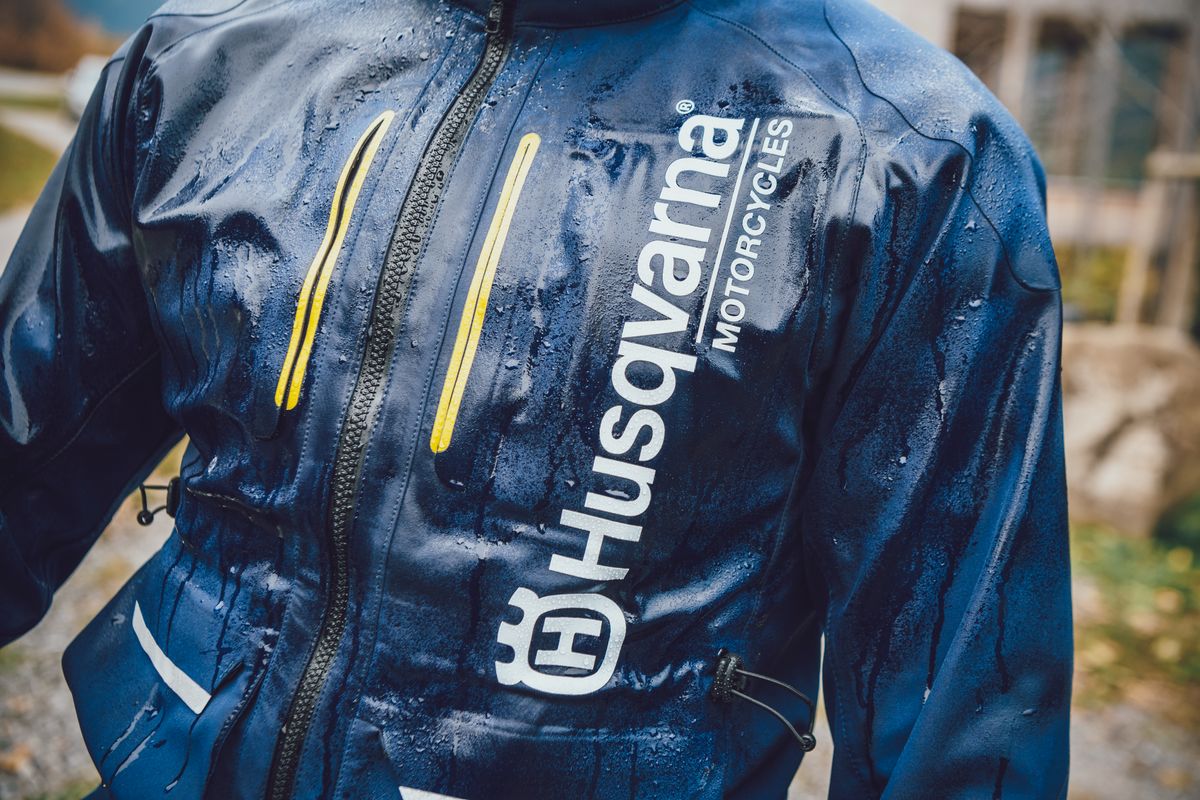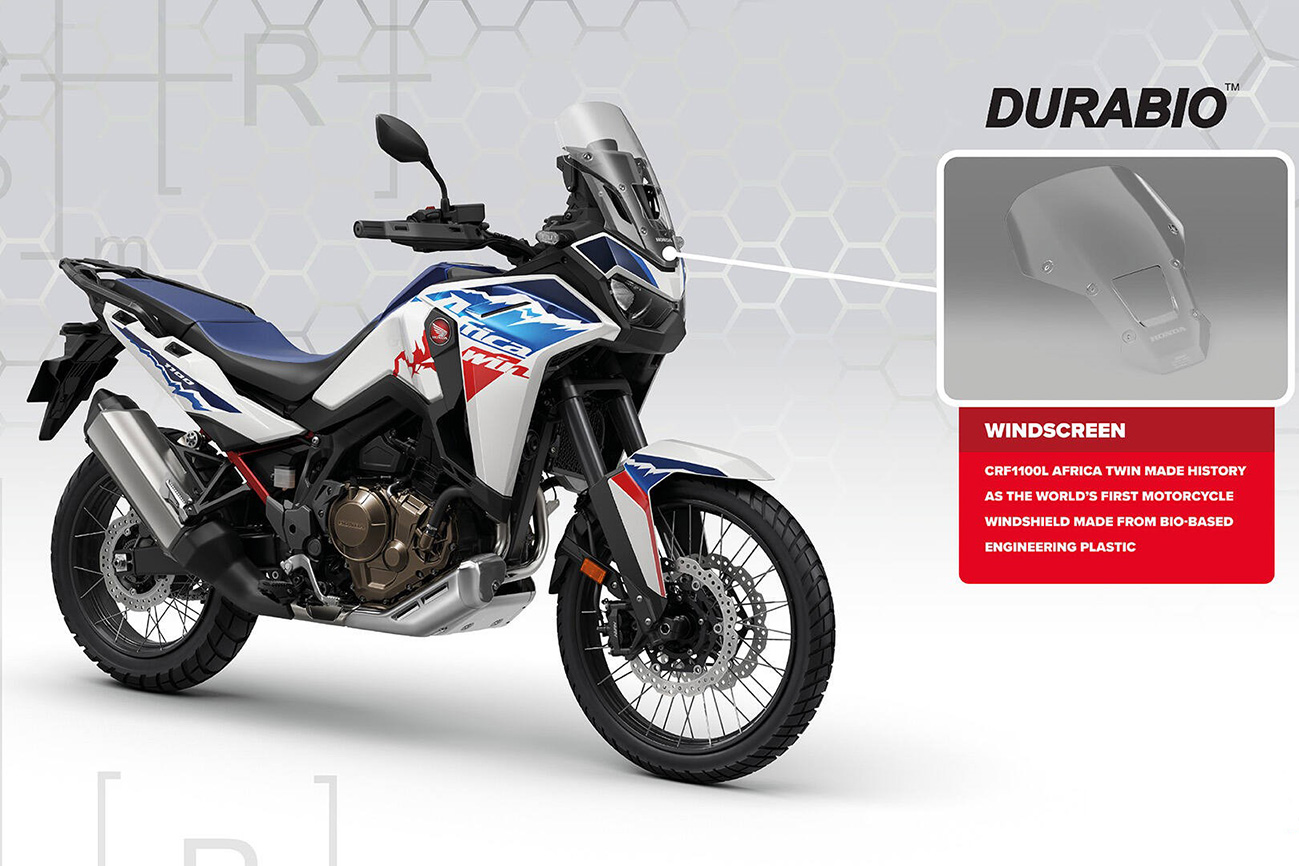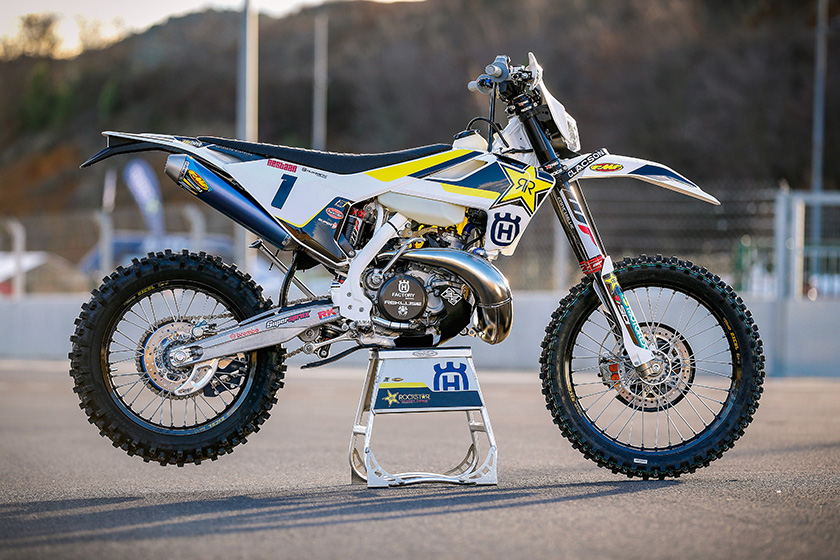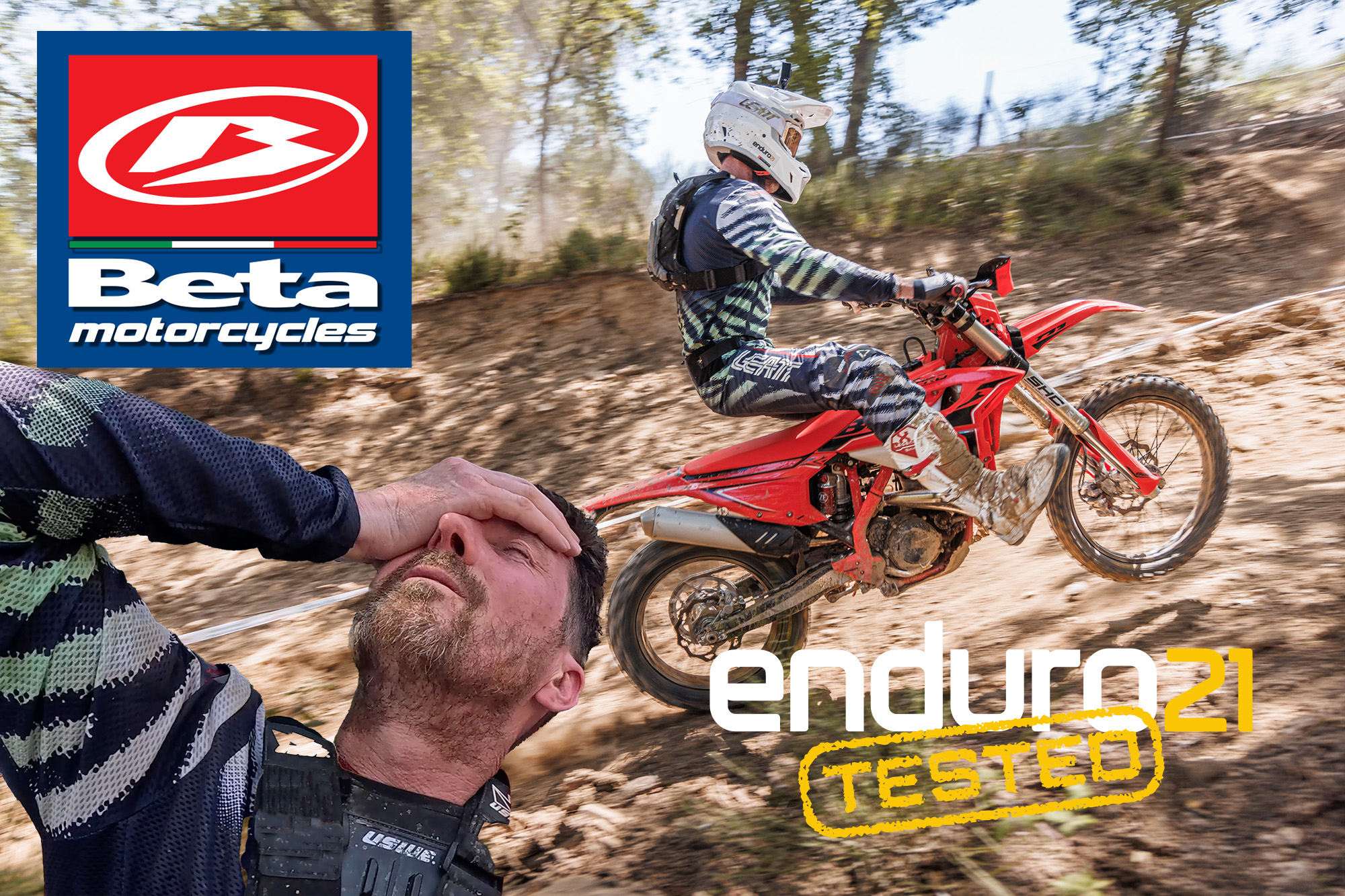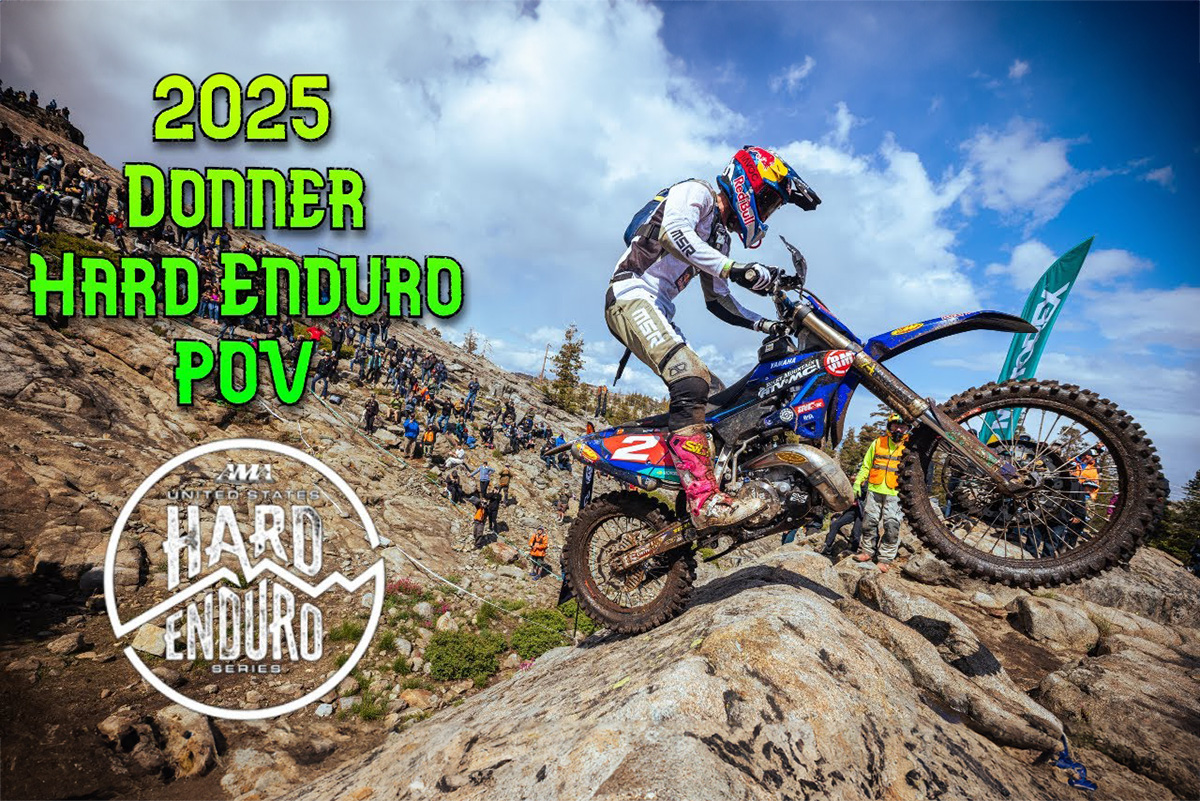Pro Bike: Graham Jarvis’ 2018 Husqvarna TE300i
Husqvarna’s factory riders had a busy time getting to grips with the new fuel-injected TE300i in 2018, Enduro21 got all the details behind Graham Jarvis’ first carb-free machine.
While the chassis, suspension and hard parts remain largely untouched over the 2017 carburettor model, Graham’s right-hand man Damien Butler has been meticulous in preparing the new fuel-injected TE300i to get it set up exactly to the King of Hard Enduro’s liking.
As Damo’ tells Robert Lynn, there was a lot to learn about the new models, but feels their set-up is on the money and the new bikes bring plenty new to the table. Catching five with Damo’, he runs us through the setup of Graham’s TE300i…
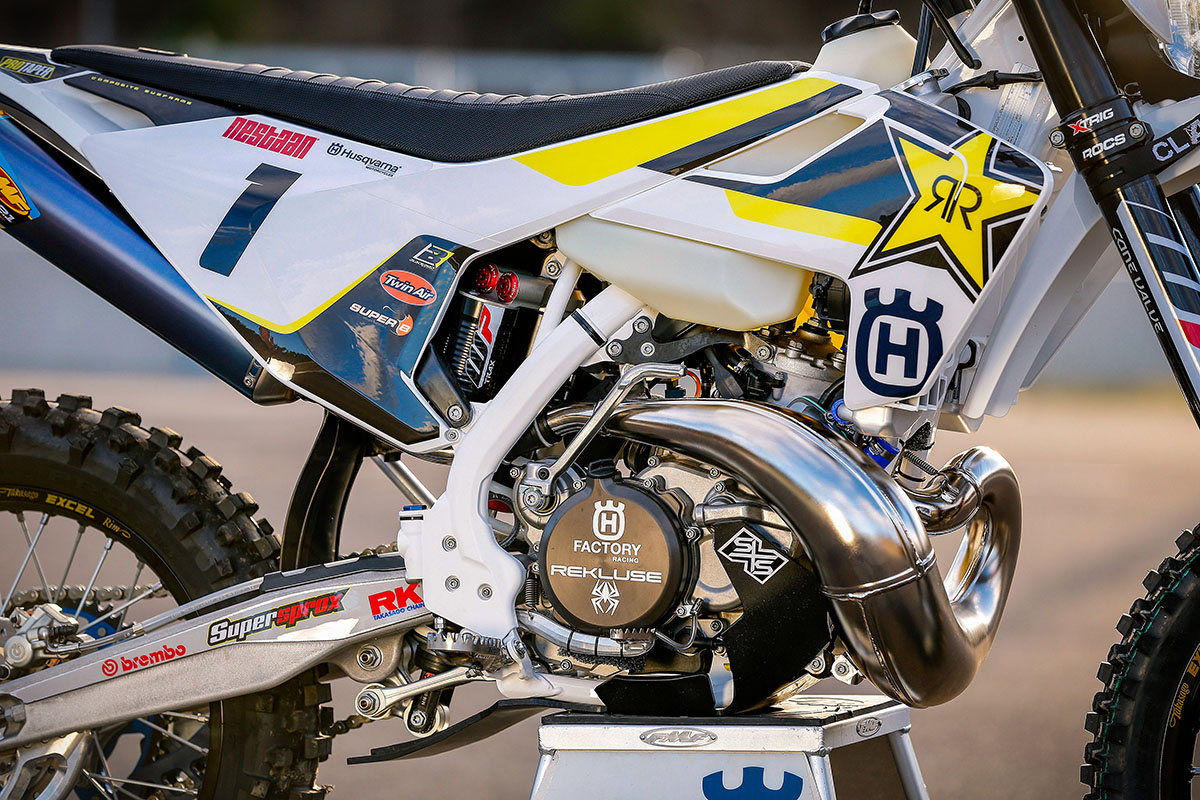
Learning the art of fuel injection
“Testing during the winter and pre-season races has been really good, with big steps in the what we’ve done. Now, leading into WESS, we’re at the point where we’re really happy with everything and Graham’s looking forward to showing just what he can do on it.
“Compared to the carburettor model what we’ve noticed is that the characteristics of a faster track do suit the fuel injected model more than a slower riding course, which leans more towards the carb. However, that’s offset by the fact that the fuel injected bike, when put head-to-head on a hill climb with the carb model, has unbelievable traction.”
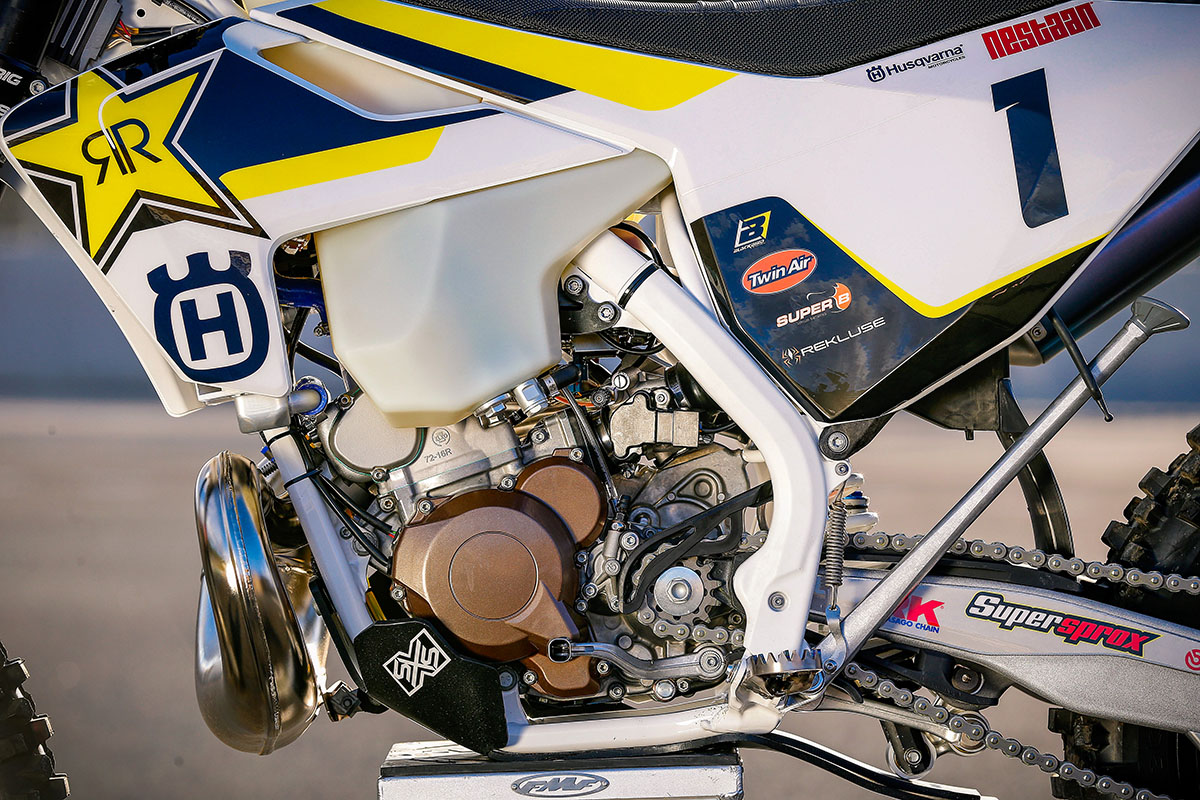
“A big benefit of the fuel injection system is that the engine is always running crisp and clean. On slow, technical riding it doesn’t load up and doesn’t require that usual big rev to clear it out before hitting an obstacle. And that’s important, especially with racing so tight now. We have found that when you chop the throttle on a really fast section there is a slight delay, but it’s fairly minuscule. Naturally, there’s a play-off between both models, but with each test there’s a bigger step taken in the right direction.”
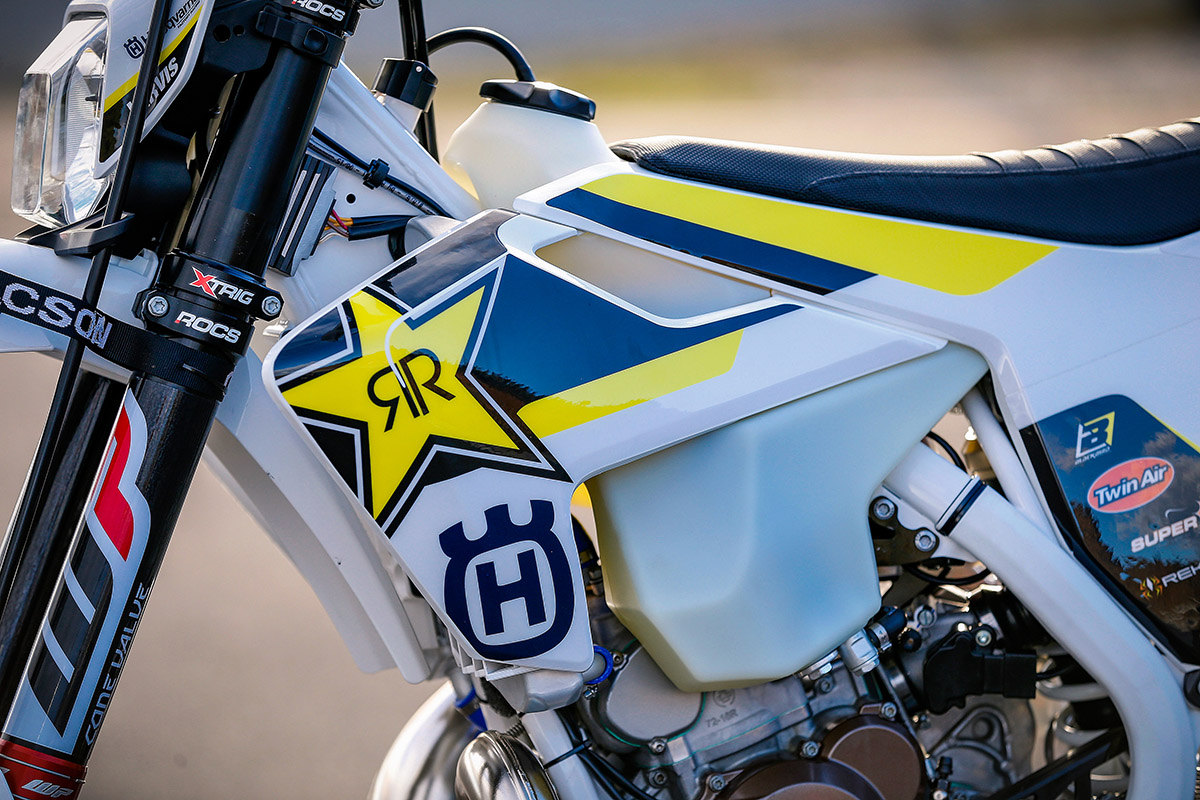
Three hours on one tank of fuel
“The fuel economy is unreal. The bike wastes considerably less fuel than the carbed model and even with the same fuel tank as the ’17 bike, we’re finding we don’t need to refuel during a three hour race. For the exhaust system we run the standard front pipe, with the FMF 2.1 Hardcore titanium silencer. This is actually the mark 2 version in that it is slightly longer than the previous model. It’s not available yet, we’re testing it with FMF Racing as it’s geared towards suiting the overall package of fuel injected bike.”
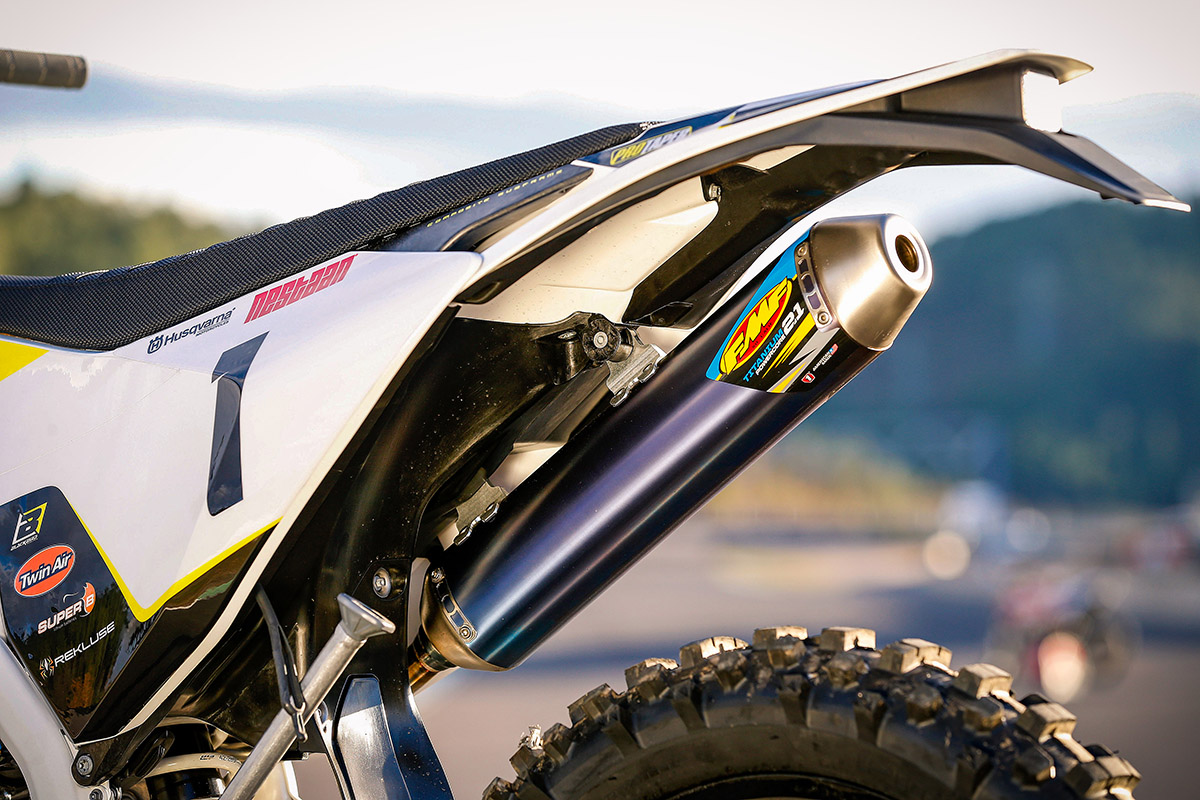
Getting the best of both worlds from the suspension
“Graham runs a set of 48mm WP Cone Valve forks and Traxx shock on the rear. The shock has a light spring fitted, 42 weight rated, which is two rates lower than anybody. But there’s also some different internals in the shock to offset that. Overall, Graham runs the softest setting of all riders, but the setup still allows for fast riding.”
“When you ride it initially feels like a trials bike during the first third of travel, but as speed increases, the resistance ramps up and it can take some really big hits. We’ve taken it to our local motocross track — Fat Cat — and comfortably cleared some of the biggest jumps on the track without it bottoming out and whacking the ground. That’s the result of a lot of work between Graham and Paul at WP. A lot of riders have tested our settings that Graham’s developed and quite like it too.
“The triple clamps are Xtrig Rocs and generally we set the fork at about the third or fourth ring in the clamps.”
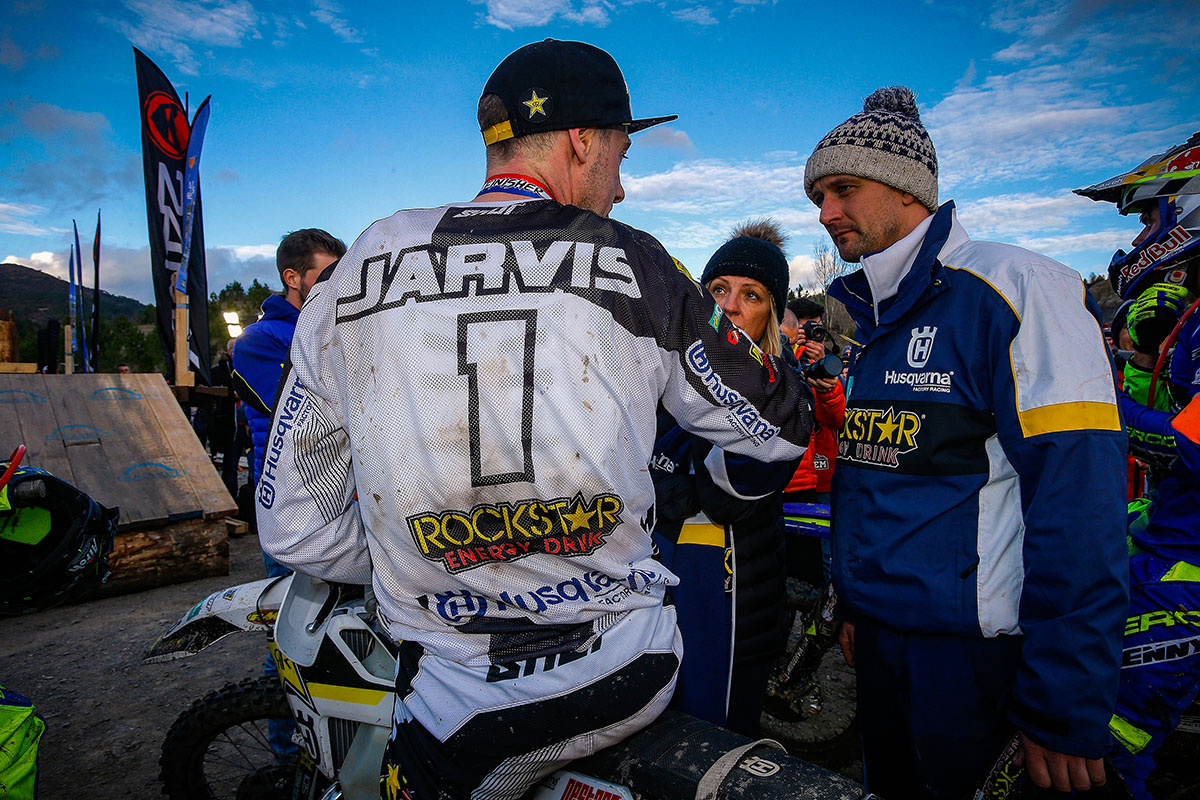
She’s full manual, baby
“Graham doesn’t use an automatic clutch. It’s a question we’re asked almost every race weekend. What he runs is the Rekluse Manual aluminium billet clutch basket and the Rekluse pressure plate with standard clutch plates. We also fit the Rekluse clutch cover for added protection because it’s much stronger over the standard cover.”
“We run standard radiators and cooling fan. We fit the Samco silicon hoses because they are stronger and expand less. Basically, this means the coolant levels don’t vary with operating temperatures. Transmission is a six-speed standard ratio gearbox with 13/50 sprockets by Superspox. New for this year is the RK chain.”
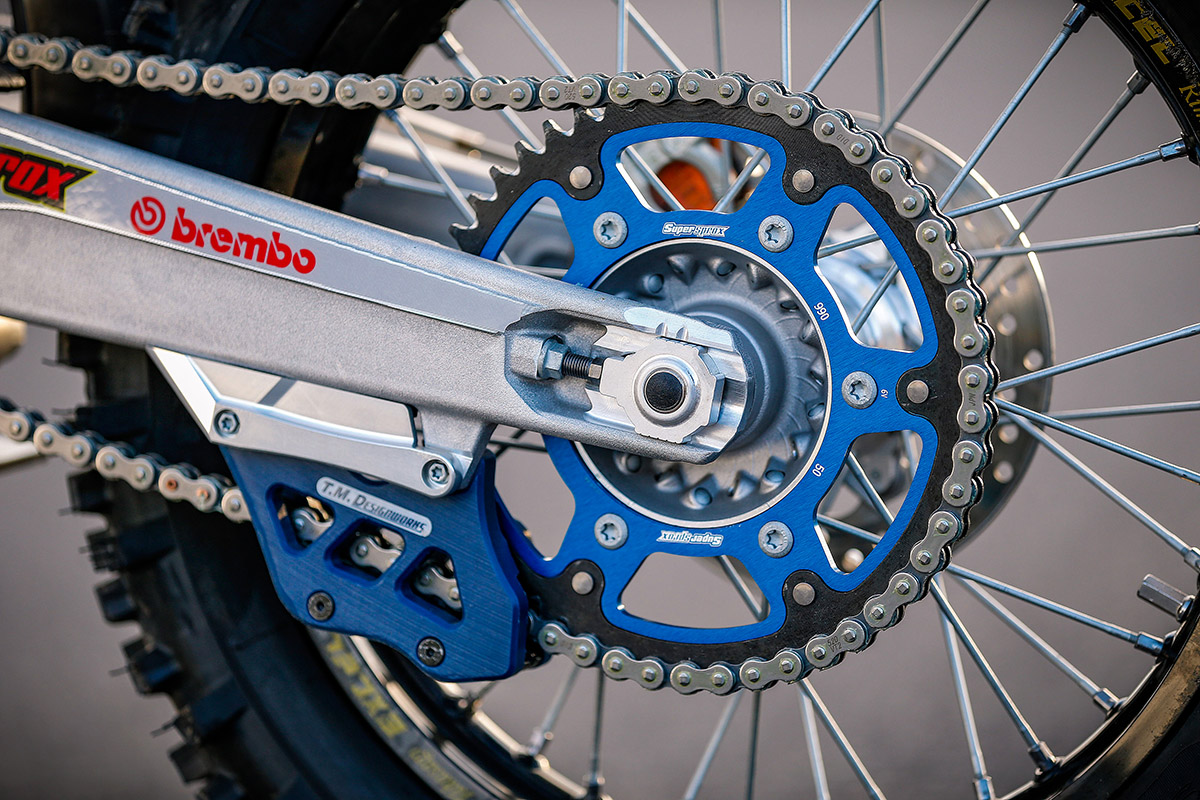
Stopping Power
“For braking, the setup is a Brembo Factory SXS caliper on the front, with the standard Husqvarna caliper on the rear because Graham found the rear braked too strongly for his liking.”
“The discs are from what the guys used in the World Enduro series last year. The idea of the cut-pattern on the rear is to help avoid the disc bending on rocks. Also the slave cylinder is the factory version, which doesn’t have glass window to avoid breakage.”
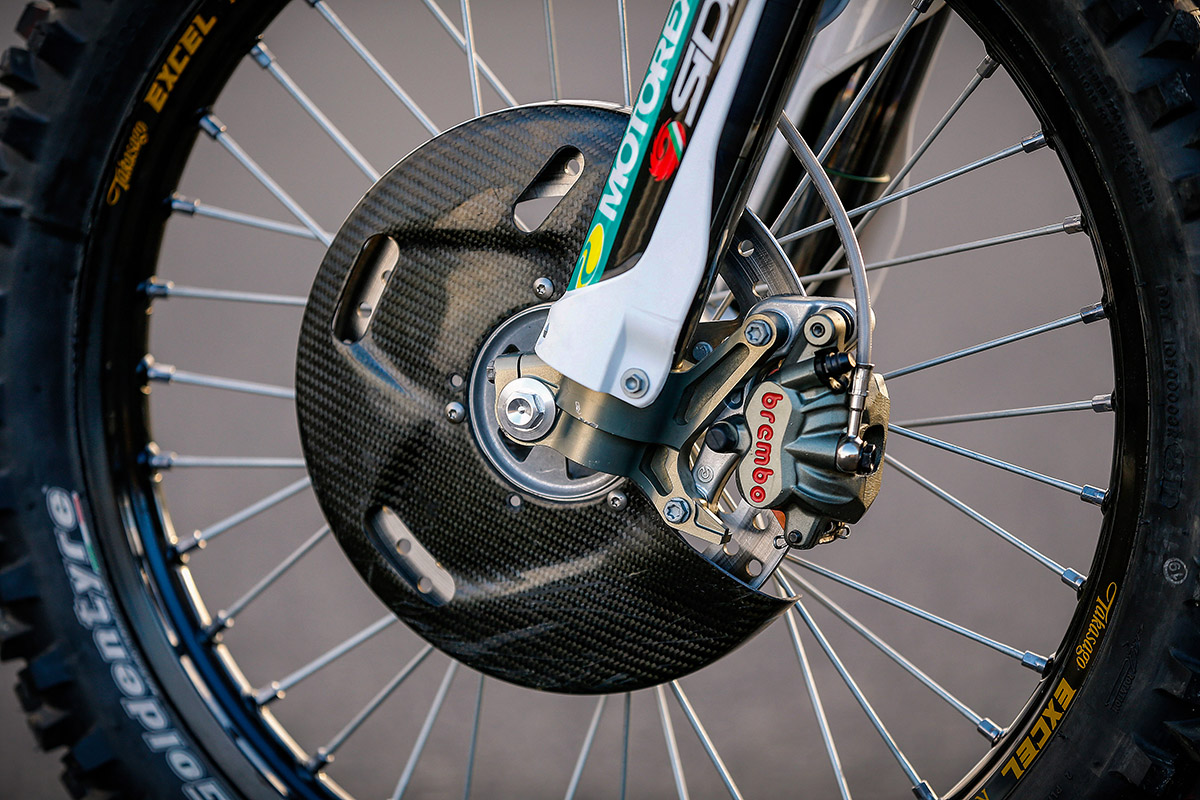
Lessons learned from Sea to Sky crash
“After Graham’s crash at Sea to Sky, where the clutch perch broke, we’ve switched to the Teflon-bush clutch and front brake clamps available in the Power Parts catalogue. With the levers positioned tight and firmly, the teflon allows the clamp to move in the event of a crash. I put some grip tape on his levers for better control.”
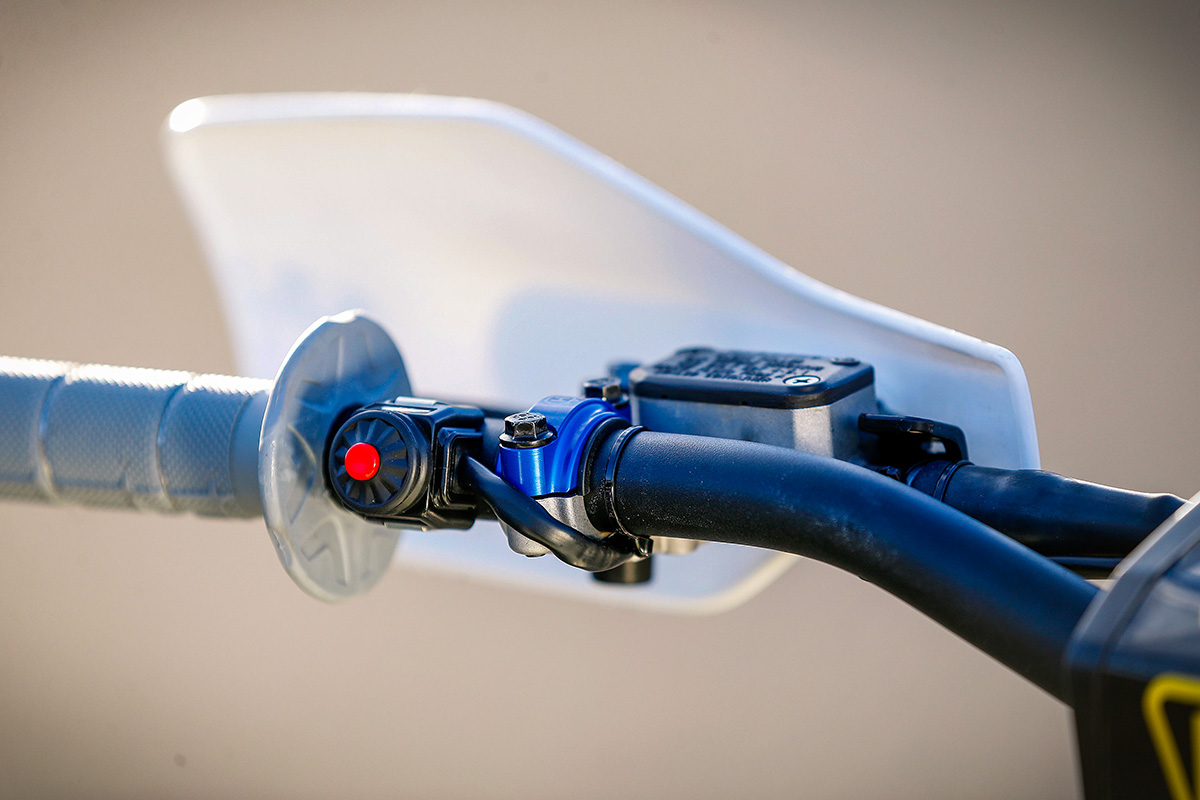
“We run the standard Husqvarna Pro Taper handlebar, positioned level in line with the forks like most riders. It’s quite a low bar with a wide sweep. Grips are the 50/50 diamond waffle from Pro Taper.”
“Graham likes the Enduro Engineering brake pedal with brake snake attached. We’ve found it less rigid than standard, so will therefore bend before it brakes. Raptor supply the foot pegs. They’re a beefy set of titanium pegs for added grip and are positioned 10mm back and 10mm lower over standard foot pegs.”
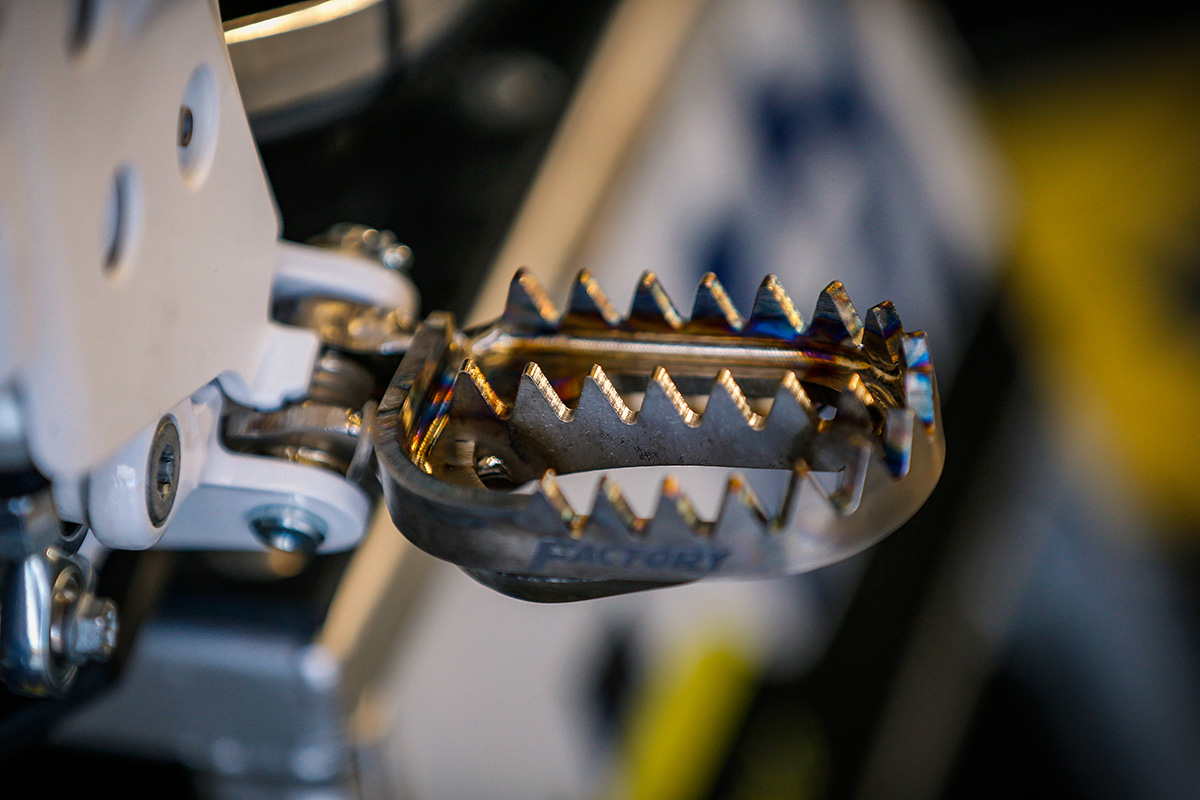
“Additional parts include the SXS skid plate with shark protector linkage fin, TM Engineering chain block, Zip Tye disc guard, grippy seat cover and pull straps.”
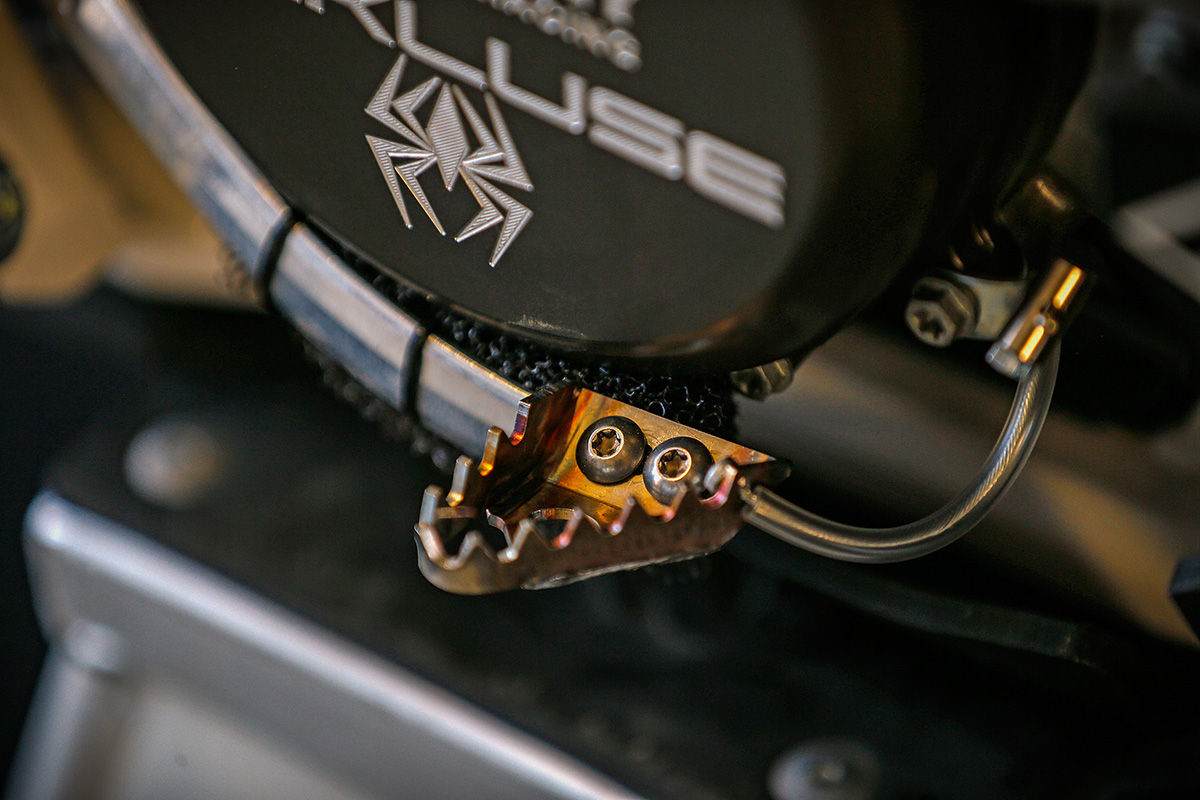
Photo Credit: Enduro21/Robert Lynn




